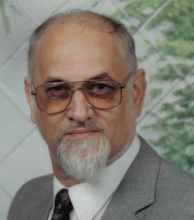
Here in the UK a government commissioned paper
'The Rose Report' (on the Primary Curriculum) has just been published.
I was particularly interested in how ICT and in particular e-Portfolios might be able to assist in this revised approach to teaching and learning. I quote one opening paragraph:
"The report explores a curriculum design based on a clear set of culturally derived aims and values, which promote challenging subject teaching alongside equally challenging cross-curricular studies. Placing literacy, numeracy, ICT and personal development at its heart, the provisional model aims to secure high achievement in these vital skills for learning and life. Six areas of learning are proposed to give schools optimum flexibility to localise the curriculum and respond to children’s different but developing abilities, to provide ample opportunities for cross-curricular and discrete teaching and to help smooth the transition from the Early Years Foundation Stage to the primary curriculum. The areas of learning are shaped by the key ideas which are deemed essential to a child’s understanding."
As far as I am concerned, ICT should support and be developed in each of six proposed "
areas of learning":- Understanding English, communication and languages;
- Mathematical understanding;
- Scientific and technological understanding;
- Human, social and environmental understanding;
- Understanding physical health and well-being;
- Understanding the arts and design.
However more relevant to this blog: ICT is one of the central "skills for learning and life" which should be developed across the curriculum, along with literacy, numeracy and personal development.
The question about how ICT can support this required combination and how in particular an e-Portfolio strategy can be used to address these issues follows:
Use of e-Portfolios in Primary Schools
The ability of even the youngest child to select what they are proud of, to compare with others' work, to listen to suggestions, to be able to review one's activities and explain why certain procedures or processes were adopted is an essential part of learning. However, the documentation of these often ephemeral activities is not always easy to do.
The e-Portfolio is by far the best way to capture any of the above, in text, scanned images or any form of 'rich media'. So long as the e-Portfolio owner (ie the pupil) has access to the web, an e-Portfolio becomes independent of any LMS, VLE, stand alone laptop, home PC or for that matter any web-enabled device.
However, I was recently reminded that valuable information needs to be transmitted
TO the Primary school from the Early Years Foundation Stage assessment regime. What with 119 stages to report on, all at different times and possibly in a different order from one child to another, the e-Portfolio is quintessentially apposite.
'Learning for Life' not only embraces those generic ICT skills which will last one's lifetime and evolve as new technologies become universally acceptable, it also has connotations of selecting and capturing those artefacts which have some enduring qualities related to learning processes which are worth keeping and reflecting upon both presently and at a later date.
Again, the e-Portfolio is most apposite in providing a medium of portability. At one time when a child moved from one school to another, either 'sideways' as when moving house or 'vertically' as in moving to 'the big school' children would take an envelope or the school would post on a parcel of exercise books and other artefacts (which invariably would not be seen by many staff). Now that much more work is done electronically,
these transitions can also be performed through the learner's e-Portfolio. Sometimes called 'capstone' events, the learner has the opportunity to carefully select those artefacts which best represent 'ME'. (And they can be seen at any time, by any number of staff.)
However, the e-Portfolio also provides the site for a number of e-safe activities, such as peer review, collaboration, surveys and informal formative feedback as well as inputs from parents, carers and mentors.
Where the e-Portfolio is hosted externally and therefore is not limited by the constraints of the VLE, the young child can begin to organise one's site, selecting from various templates, skins, fonts and avatars in order to create a web-presence or 'digital self' which helps to reflect a personal self-image.
See this web-page for examples of how the one e-Portfolio can evolve with the child.
 Procurement is a funny old business! However much one warns people to be careful it seems that buyers can so easily be short-changed. I know of an accountant who, against my advice, bought sets of swivel chairs for school use. Yes, you've guessed it, being an accountant she ordered the cheapest that she could find in the catalogues, sight-unseen. Within weeks knobs and wheels were falling off and the sponge padding started coming out of the upholstery - the chairs did not last a year. Slightly more expensive ones would have lasted years longer.
Procurement is a funny old business! However much one warns people to be careful it seems that buyers can so easily be short-changed. I know of an accountant who, against my advice, bought sets of swivel chairs for school use. Yes, you've guessed it, being an accountant she ordered the cheapest that she could find in the catalogues, sight-unseen. Within weeks knobs and wheels were falling off and the sponge padding started coming out of the upholstery - the chairs did not last a year. Slightly more expensive ones would have lasted years longer.














